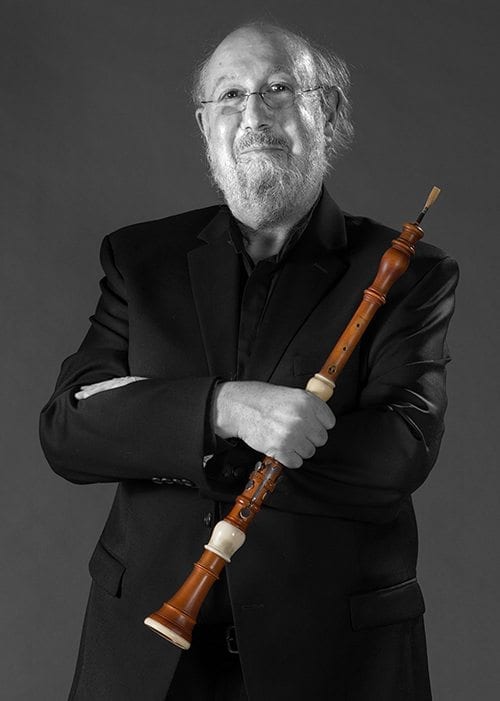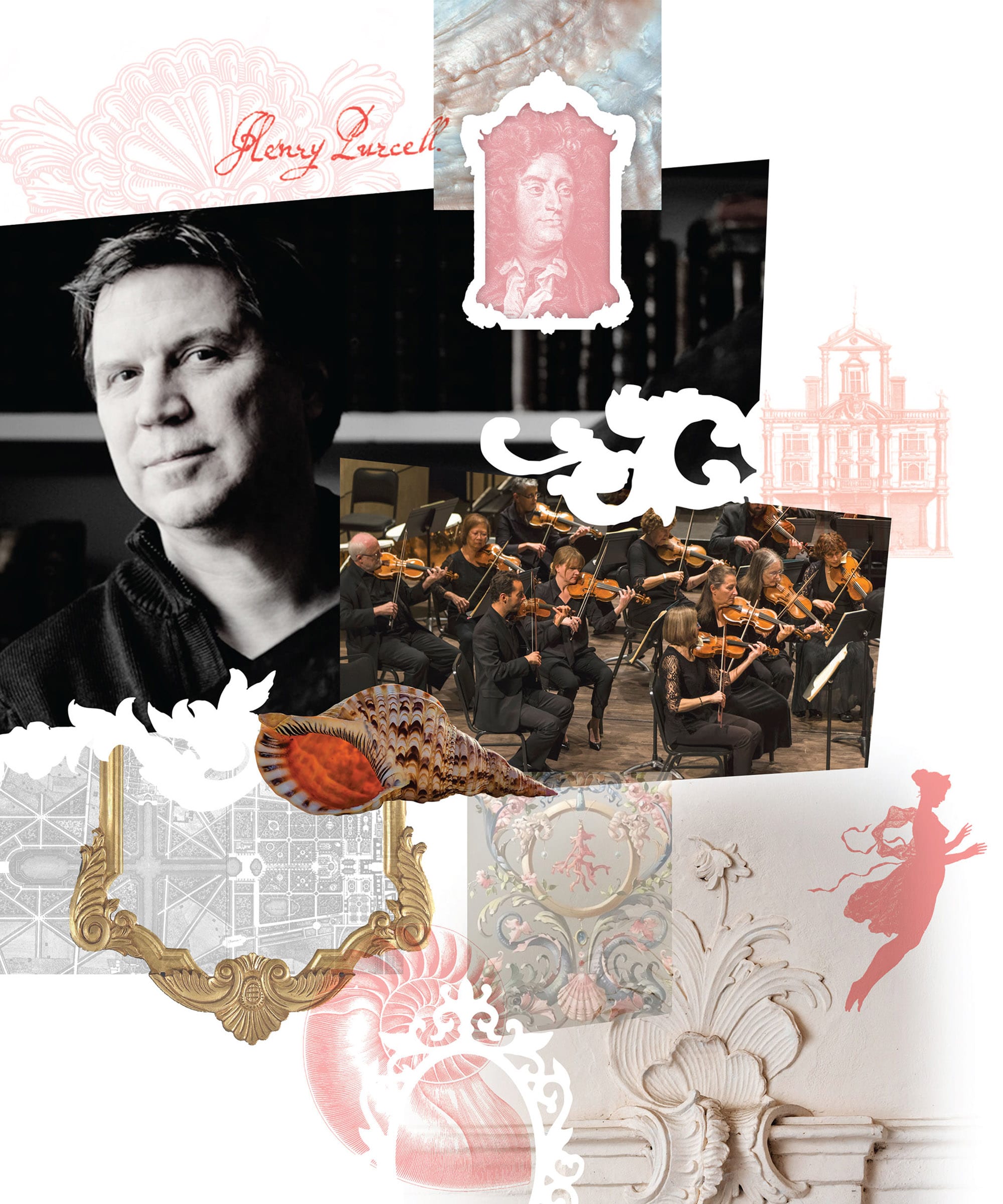
From Versailles to the English Court
March 9–13, 2022
England and France might be separated by just 20 miles of water, but their musical traditions are utterly distinct, and never more so than during the Baroque era, as demonstrated by this concert showcasing music from each. Skip Sempé makes his guest conducting debut with PBO.
Music by LULLY, COUPERIN, MARAIS, ALBINONI, MUFFAT and PURCELL
Skip Sempé, conductor
Marc Schachman, oboe
Philharmonia Baroque Orchestra
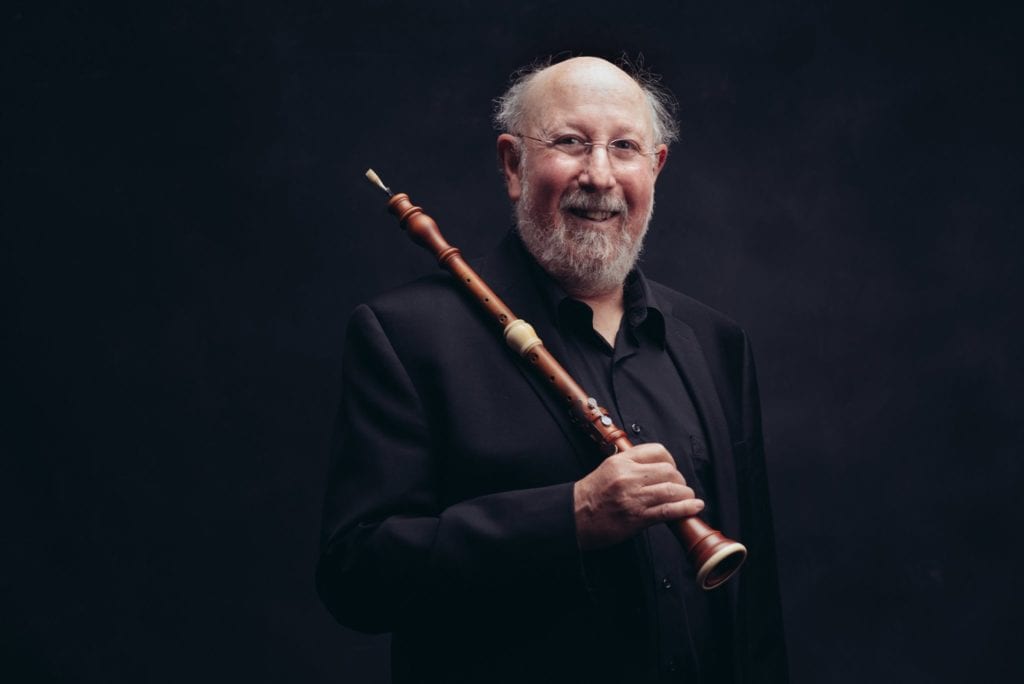
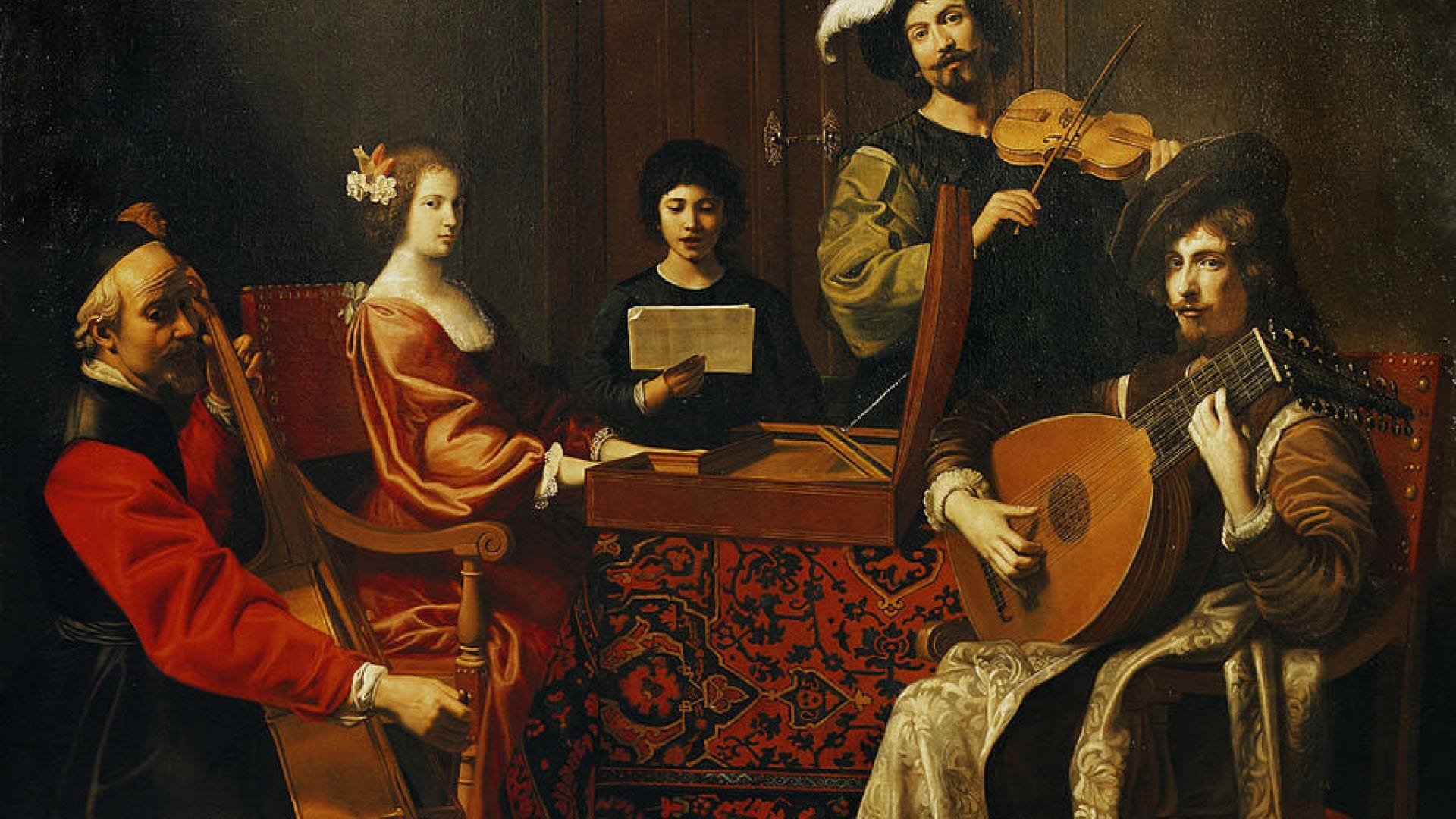
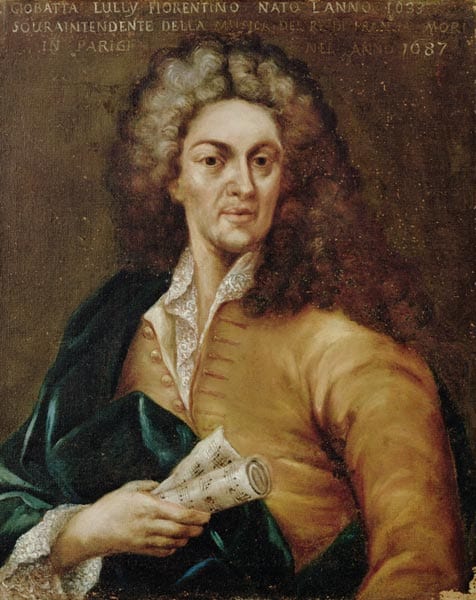
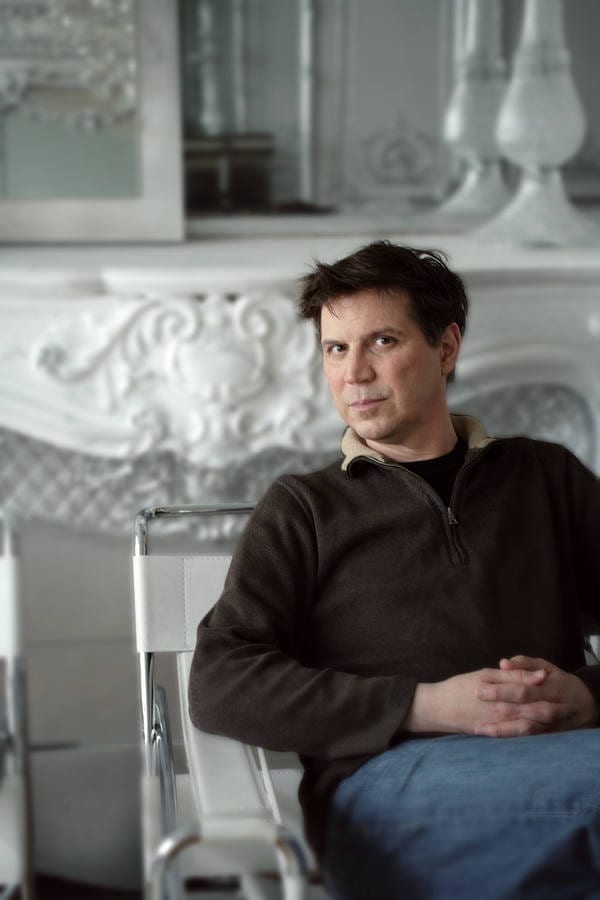

”French flamboyance that you'll want to hear again and again.”
Gramophone
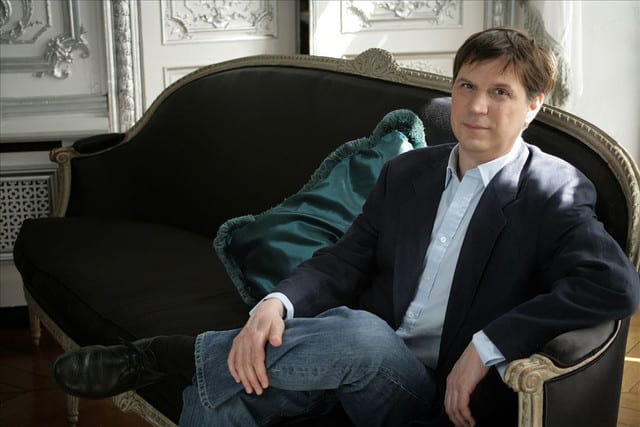
About From Versailles to the English Court
England and France might be separated by just 20 miles of water, but their musical traditions are utterly distinct, and never more so than during the Baroque era, as demonstrated by this concert showcasing music from each.
The French side here is made up of Lully (actually Italian!), Couperin and Marais, all of whom reflect the opulence of the French Court and the lavishness of Versailles in their highly ornamented music.
Muffat and Purcell make up the English side, with Purcell in particular having an eye on success both at Court but also commercially. His music has an immediate appeal, achieved through infectious tunes (Abdelazar) and through a very un-English emotional directness.
Completing our program is a diversion to Italy, where Albinoni, like Purcell, knew how to compose music of almost visceral appeal. Favoring melody and rhythm over technical display, his Oboe Concerto No. 2 is best known for its Adagio of almost haunting beauty. We welcome another PBO debutant, conductor Skip Sempé, for these performances.
The Music
LULLY Ouverture from Atys
Suite from Les Plaisirs de L’Ile Enchante
Air des Démons from Alceste
Passacaille from Armide
PURCELL
Suite from The Fairy Queen
Sinfonia “My heart is inditing”
Sinfonia “Now does the glorious day appear” from Ode for the Birthday of Mary II
Round O from Abdelezar
Ouverture en sol mineur, Z. 762
COUPERIN Air: Noblement from Concert dans le goût théâtral
MARAIS Suite from Alcione
ALBINONI Concerto for Oboe in D minor, Op. 9, No. 2
CAMPRA Premier air pour les Espagnols from L’Europe Galante
MUFFAT Chaconne from Armonico tributo Suite No. 5 in G major
Program Notes
Jean-Baptiste Lully (1632—1687)
Jean-Baptiste Lully was born in Italy but became the most significant French musician of his age. He arrived at the Court of Louis XIV in 1653 as a violinist in its orchestra. Two decades later, Lully had full control of that orchestra and with it, the best-resourced musical establishment in Europe.
That ‘control’ was quite literal. Lully was renowned for his sense of orchestral discipline, which laid the groundwork for the art of conducting but also sealed Lully’s fate: he died after smashing his foot with his own conducting staff and succumbing to infection. Lully’s fine ensemble of 24 Violins (actually stringed instruments of five different registers) underpinned the long line of glorifying operas with obligatory dances that contributed to the aesthetic of court at Versailles.
Atys, Overture
Atys was Lully’s fourth opera, the tale of a love triangle in ancient Phrygia first seen in 1676 that became a favorite of Louis. It opens with a fine example of the particular form of overture Lully pioneered, and which became a model all over Europe under the label ‘French Overture’.
According to the established pattern, the opening section is stately, expressive and characterized by grand ‘dotted rhythms’. This followed by a lively second section in which various portions of the orchestra tear off with a tune at staggered intervals, forming a fugue.
Suite from Les plaisirs de l’île enchantée
A distinctive feature of court life at Versailles was the multimedia celebratory party or fête—mostly presented in honor of Louis. The first of these, staged in May 1664, was a week long spectacle including equestrian pursuits, aquariums, feasts, theatrical performances and visits from other monarchs—all of whom actively took part in the performances. Molière and Lully collaborated in the staging of the theatre pieces, which included an opera—ballet take on the story of Alcina and her magic island as told in Ariosto’s Orlando Furioso.
Passacaglia from Armide
Lully’s most fruitful theatrical collaboration was with the librettist Jean-Philippe Quinault. He provided the composer with canny texts on mythological plots that allowed for dancing and chorus singing while still managing to fawn in front of Louis XIV, glorify the French nation and keep an audience hooked episodes of romance and adventure.
The partnership’s last and most successful tragédie en musique was the spectacle Armide, first performed at the Paris Opera in February 1686. It recounts an episode from Torquato Tasso’s popular epic poem Gerusalemme liberate, in which the title character falls in love with her sworn enemy, the crusader Rinaldo.
In the opera’s fifth act, Armide has Rinaldo entertained by a troupe who dance to this passacaglia – a piece that plays out over a looping bass line or ‘ostinato’. In this case, that looping ostinato is a simple pattern of four descending notes in a minor key, over which the composer presents as varied an array of textures and melodies as possible.
François Couperin (1668-1733)
Concert dans le goût théâtral
François Couperin was a keyboard player and composer who ingratiated himself to Versailles as a visiting harpsichordist and composer. His legacy rests on his many exquisite books of harpsichord and organ music. Included in his output is a series of pieces for unspecified instruments that sought to unite the French and Italian styles, Les Goûts-réunis (‘The Styles Reunited’).
Couperin gave private recitals for Louis XIV, in which he would often play extracts from Lully’s tragrédies lyriques of Lully. Book 8 of Les Goûts-réunis celebrates the world of theatre in an overt homage to Lully. The musicologist Peter Holman has argued that this book might originally have been conceived as a ballet of four or five parts. If so, we can logically conclude that it might have been played by the 24 Violins. The set comprises an imposing ‘grand ritornello’ and a set of nine lively dance movements.
Marin Marais (1656-1728)
Suite from Alcione
Marin Marais was one of the great string players of his day and an aficionado of the viola da gamba (a forerunner of the modern cello). Marais wrote operas as well as instrumental works, one of which, Alcione, is his masterpiece. It was first performed in February 1806 at the Académie Royale de Musique, where Marais was permanent conductor.
The opera’s immediate success was largely down to its instrumental music; this was the first French opera score to include a part for double bass. The story is based on the myth of Ceyx and Alcyone from Ovid’s Metamorphoses, which includes plenteous opportunities for musical colouring, most famously in a storm (‘The Tempest’) which the composer sets with bustling and blustery passages complemented by a wind machine.
Other parts of Alcione’s orchestral score were well worth excerpting too, which explains the existence of this suite. Also Included are dances for shepherds, shepherdesses, and sailors (if you think you recognize the latter, it became the popular carol, Masters in this Hall). The score also boasts a delightful Chaconne, which not unlike the passacaglia heard earlier weaves a series of variations over a looping series of harmonies.
Tomaso Albinoni (1671-1751)
Oboe Concerto in D minor Opus 9 No.2
Tomaso Albinoni’s family wealth meant he was never forced to seek full-time employment at a royal court. Instead, the Venetian composer focused on developing a highly melodic musical style that brought him significant success in the opera house.
This song-like style and distinct gift for melody crept into non-operatic works from Albinoni’s pen, including his celebrated set of 9 oboe concertos labeled Opus 9 and published in Amsterdam in 1722. This was the first significant set of oboe concertos by any composer, and certainly the first to be published by an Italian.
The standout work from Opus 9 is this one. In between the energetic outer movements comes a ravishing Adagio in which the soloist drapes a long, cantilena-style melody over the repeated chords of an unchanging accompaniment. This long-breathed and eminently sing-able line—like the arpeggios that leap around the last movement, mimicking one another—has more than a hint of the operatic about it.
Georg Muffat (1653-1704)
Passacaglia (from Armonico Tributo Sonata No 5)
Like so many musicians before and after him, Georg Muffat found employment with the Archbishop of Salzburg. By the time he arrived there in 1678, Muffat had been heavily influenced by Lully, his former teacher.
The five Armonico Tributo sonatas, ensemble pieces that form pre-cursors to what we know as the Concerto Grosso, reveal the influence of both Lully and Corelli. Specifically from Lully, Muffat inherited a fondness for passacaglia form, and this example share much (including its key) with Lully’s passacaglia from the opera Armide. Muffat lays 25 variations over his looping bass line, creating a piece which salutes both the Italian and French traditions in its grace, virtuosity and beauty.
Henry Purcell (1659-1695)
Like Lully himself, many of the new impulses that swept into music in the early 1600s came from Italy. Charles II even commandeered an Italian composer, Giovanni Battista Draghi, to work in the English capital.
Church music predominated in England at the time, and a young Henry Purcell was fast rising through the ranks of England’s most prestigious musical institution: the Chapel Royal. Purcell would become one of the major exponents of the Italian-influenced ‘verse anthem,’ in which a solo voice recounts verses of text between instrumental ritornellos.
After the opening of the theatres that came with the Restoration, London developed a thirst for plays, in particular plays with music. Purcell, having written a string of delectable sacred works for the Chapel Royal and other palatial occasions, eventually turned his unique and superlative and talents towards the stage.
Ode for the Birthday of Mary II: Sinfonia, Now Does the Glorious Day Appear
Royal ‘odes’ were a feature of Restoration England: specially written works by a Westminster composer in celebration of New Year’s Day or a royal birthday. This example was written to celebrate the birthday of Queen Mary on 30 April 1689, and consciously referenced not just the grand style and formal structure of a French Overture, but also the resonance of the Versailles orchestra with an ‘added’ third violin part (these days, a viola). Purcell may also have been saluting Muffat’s distinctive orchestral style.
Round O from Abdelazar
In the last year of his life, Purcell wrote the tune that has arguably become his most popular. Working increasingly in the theatre, the composer was approached to write incidental music for the play Abdelazar by Aphra Behn, one of the first women in England to make a living exclusively from writing.
Among Purcell’s music was this Round or ‘Rondo’, which repeats a harmonic process much like a passacaglia or chaconne. Purcell’s opening tune, in the forthright key of D minor, forms the subject of Benjamin Britten’s A Young Person’s Guide to the Orchestra.
Sinfonia from My Heart is Inditing
On 23 April 1685, James II was crowned King of England in Westminster Abbey. Both the Chapel Royal and choir of Westminster Abbey were on hand for the nine anthems that were performed at the opulent ceremony, as was the court ensemble of 24 Violins (modeled on that of Versailles).
Purcell, who was responsibly for constructing and then dismantling a temporary organ for the occasion, contributed the anthem to accompany the crowning of the Queen Mary, My Heart is Inditing. Its elaborate opening Sinfonia capitalized on the strength and sheen of the 24 Violins (which were tuned up for extra glisten), and the huge continuo group that had been assembled for the coronation. After 18 bars, the lower strings begin to sound in their actual low registers, bringing an extra spaciousness and grandeur to the music. The section in a dancing three-time preceded the entrance of the choirs.
Suite from The Fairy Queen
The genre of the semi-opera, combining spoken with sung drama, was developed by Purcell who built on foundations laid by Matthew Locke and others. In 1692, Purcell planned an adaptation of Shakespeare’s A Midsummer Night’s Dream.
The result, The Fairy Queen, is many things: knockabout pantomime, heartfelt romance, and even, for Purcell biographer Maureen Duffy, a work of serious erotic art exploring a full range of sexual passion.
For Purcell and his colleagues, it was a major undertaking with a huge budget for scenery, costume and effects. The Fairy Queen’s music was lively, colorful and humorous; the air ‘If love’s a sweet passion’ became a popular song in Purcell’s day, whilst the muted strings, lack of continuo and harmonic adventurousness of the music reflecting nightfall in ‘See, even night herself is here’ established Purcell as a supreme conjurer of drama in music.

